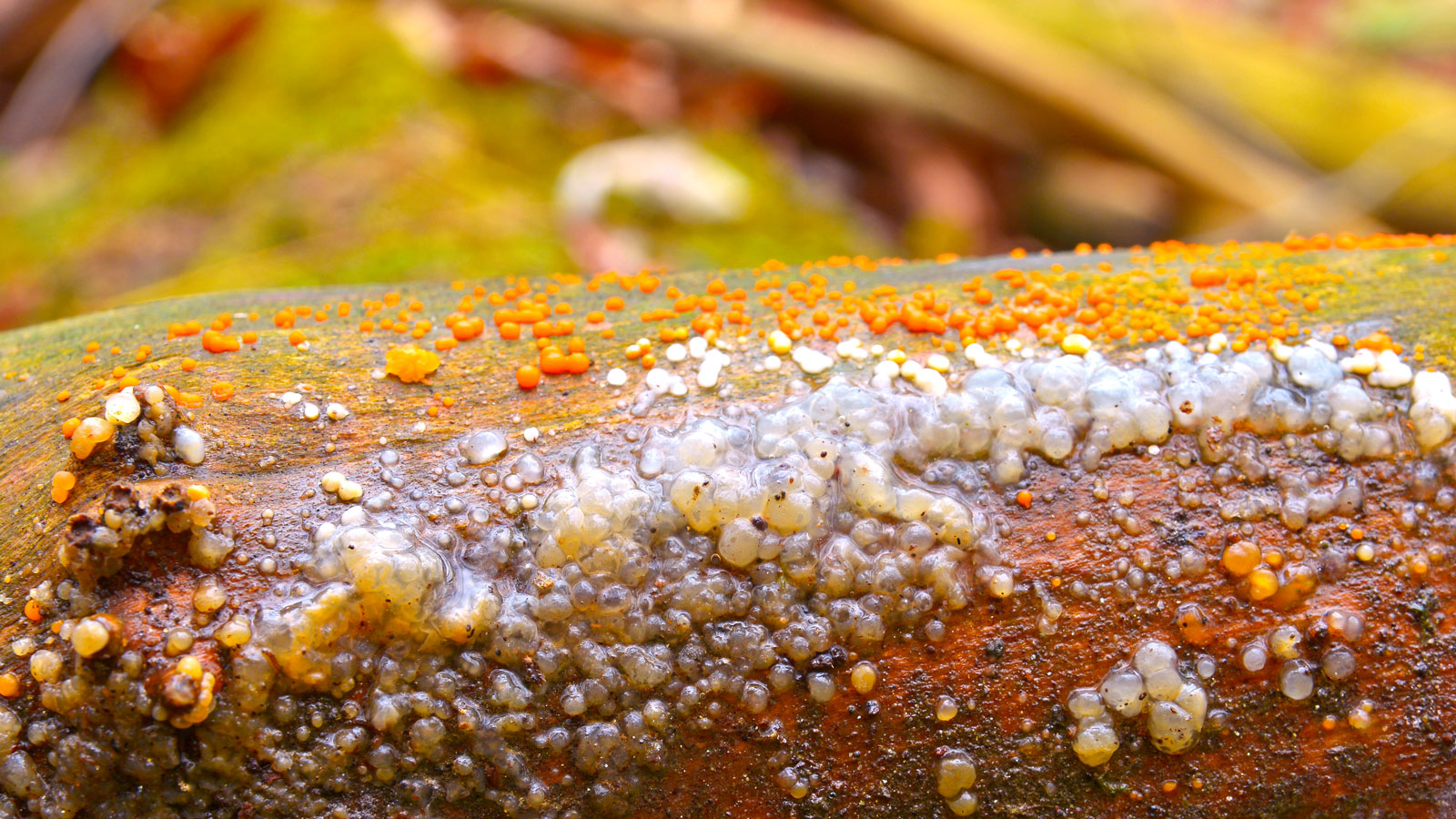Crystal Brain Fungus: All You Need To Know About Myxarium Nucleatum
At first glimpse, the crystal brain fungus can cause alarm and bewilderment, but fear not. We reveal why you can relax if you spot this squishy, gloopy garden guest


Crystal brain fungus may sound like something from a horror movie, but it's nothing to fear. This jelly fungus (with the Latin name of Myxarium nucleatum) looks a lot like frog spawn. Its fungal fruit bodies are gelatinous, watery and pale. They contain small, mineral inclusions.
Crystal brain is a common fungus in Europe but is also starting to appear in North America. It is frequently found rotting on the dead branches of broadleaf trees. Here's how to identify this peculiar fungus – and what to bear in mind if you see it cropping up in your garden.
Quick Crystal Brain Fungus Facts
- Botanical name – Myxarium nucleatum
- Height – Individual fruit bodies up to half an inch (1.5cm) high
- Spread – Individual fruit bodies 2in (5cm) wide, but fused bodies may be 4in (10cm) or more in diameter
- Sun exposure – Dries up in dry, hot weather
- Soil requirements – Not applicable
- Hardiness zones – Not applicable
- When to plant – Not applicable
What is Crystal Brain Fungus?
Crystal brain is a jelly fungus that lives on hardwood that is dead or damaged, rotting the wood. Crystal brain fungus is gelatinous, but it grows in as translucent-white fruiting bodies called basidiocarps. As a way of understanding these types of fungi, they start as single pustules which fuse to form irregular sheet-like masses. These are up to 8in (20cm) long, 2in (5 cm) wide, and ⅓in (1cm) tall. As crystal brain fungus ages, it first turns pink and finally goes brown.
This jelly fungus is common in Europe but it (or a similar fungus) is also found in North America, where it’s known as granular jelly roll. As well as the scientific name Myxarium nucleatum, other botanical names you might see used for these fungi include Exidia nucleata, Naematelia nucleata and Tremella nucleata.
Where Crystal Brain Fungus Grows
This jelly fungus lives on dead and decaying hardwood branches or trunks. It is most commonly found on sycamore trees, as well as beech trees and ash. You might also find crystal brain growing on the likes of alder trees, willows, hawthorns, elms, oak trees and elders.
How Crystal Brain Fungus Grows
Crystal brain fungus first appears on dead wood as scattered, gelatinous fruit bodies. They might be up to 0.2in (5mm) in diameter and are usually colorless, but may be white.
While mineral inclusions can be seen in the pustules, the fruit bodies do not remain scattered very long. They meld into masses that look like sheets (or brains) up to 2.5in (6cm) across. These masses darken with age and can dry out entirely, at which point they look like varnish.
Sign up for the Gardening Know How newsletter today and receive a free copy of our e-book "How to Grow Delicious Tomatoes".
Frequently Asked Questions
Is Crystal Brain Fungus Edible?
It may not surprise you to hear that scientists have not hurried to taste this fungus. Many jelly fungi are edible, so it is possible that the crystal brain fungus is also edible. However, its edibility is currently not confirmed.
Is Crystal Brain Fungus Toxic?
There are no reports of crystal brain fungus being established as toxic. That said, it's not a good idea to eat this jelly fungus unless and until it is determined to be edible.
Will Crystal Brain Harm My Trees?
The presence of crystal brain indicates dead tree matter. It is actually beneficial in the sense that it is helping to break down the dead parts of the tree. It does not occur in healthy parts of a tree.
However, you should keep your eye on how much crystal brain is developing, and the rate at which it grows. It could indicate other underlying issues. Being aware of signs of a dying tree is a good way to monitor the general health of your tree and catch any problems early.

Teo Spengler is a master gardener and a docent at the San Francisco Botanical Garden, where she hosts public tours. She has studied horticulture and written about nature, trees, plants, and gardening for more than two decades, following a career as an attorney and legal writer. Her extended family includes some 30 houseplants and hundreds of outdoor plants, including 250 trees, which are her main passion. Spengler currently splits her life between San Francisco and the French Basque Country, though she was raised in Alaska, giving her experience of gardening in a range of climates.